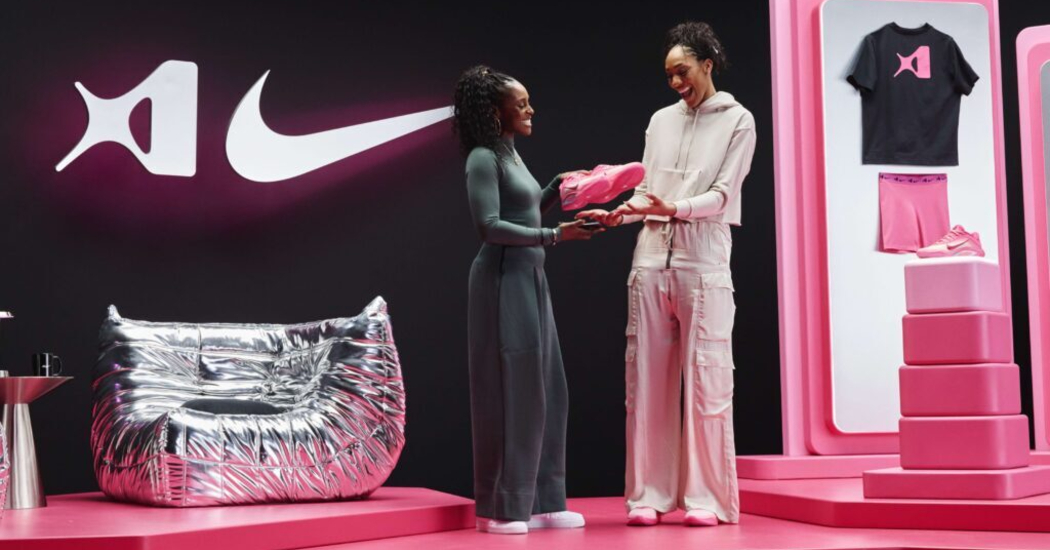From the Sidelines to Center Stage: Why Women’s Sports is the Ultimate Brand Opportunity

Image source: nike
In an era where consumers demand more than just great products—they want purpose, representation, and relevance—women’s sports have emerged as one of the most compelling platforms for modern brand engagement. No longer sidelined, women’s sports now command national attention, generate cultural conversation, and offer a unique space where values and value meet.
The Cultural Momentum Behind Women’s Sports
The numbers speak volumes. In 2024 alone, the global women’s sports market generated $1.88 billion in revenue. Viewership jumped 131%, and ad effectiveness rose 56% year-over-year—outperforming primetime averages by 40% in terms of consumer engagement. For example, the 2025 WNBA season, driven in part by the “Caitlin Clark Effect,” is shattering previous attendance and viewership records.
The opportunity is deeper than viewership. According to Rain the Growth Agency’s HypeHer research, today’s fans engage emotionally and socially—across demographics and generations. They don’t just watch the games; they follow the athletes, share the moments, and influence their communities.
Values That Resonate: Empowerment, Representation, and Community
Women’s sports are uniquely positioned to embody the values today’s consumers prioritize. Supporting women’s sports signals alignment with:
Empowerment: Elevating female athletes as leaders, creators, and role models
Representation: Supporting equity across gender, race, and identity
Community: Building authentic, cross-generational connections through shared passion
These are not peripheral benefits—they’re central to brand relevance. The HypeHer study found that fans of women’s sports are significantly more likely to purchase from brands that support female athletes, with 86% of “super fans” likely to do so, compared to 47% of general fans.
Marketing to Women’s Sports Fans
Women’s sports don’t just raise awareness—they drive behavior across the entire customer journey.
- Upper Funnel: Marketing in national moments like the NCAA Women’s Final Four generate
cultural buzz and mass visibility. - Mid Funnel: Social media activations featuring athletes offer authenticity and connection.
- Lower Funnel: Endorsements and event sponsorships convert attention into action, especially among Gen Z and Millennials, who are most likely to reward brands with their wallets.
This isn’t just a feel-good cause—it’s smart business.
Athletes as Media. Fans as Advocates.
Female athletes today are more than competitors; they’re cultural icons, creators, and storytellers. The The HypeHer research found that fans increasingly follow athletes on platforms like Instagram and TikTok, drawn to both their athleticism and personal stories—from activism to motherhood to mental health.
For brands, this means partnerships with female athletes offer powerful, multi-dimensional storytelling potential, especially when paired with creator strategies and cross-channel rights packages. Brands should have a relevant connection with the athletes it partners with as fans also prioritize authentic content from brands and athletes alike.
Don’t wait—lead.
Perhaps the most compelling insight from the HypeHer study is this: while big brands like Nike and State Farm are starting to dominate mindshare in this space, many consumers still struggle to name brands that actively support women’s sports. The white space is real, but diminishing as more brands enter. And, with emerging sports, there is lower cost-to-entry to define the narrative.
Women’s sports are connective, athlete-centric, and here to stay. For brands, this is more than a sponsorship opportunity—it’s a strategic imperative. The chance to show up authentically. To build preference. To turn cultural relevance into commercial growth.
In short, supporting women’s sports is not a trend—it’s a defining brand decision.
Have more questions about the HypeHer women’s sports fan research? Contact us at [email protected].
This article is featured in Media Impact Report No. 67. View the full report here.